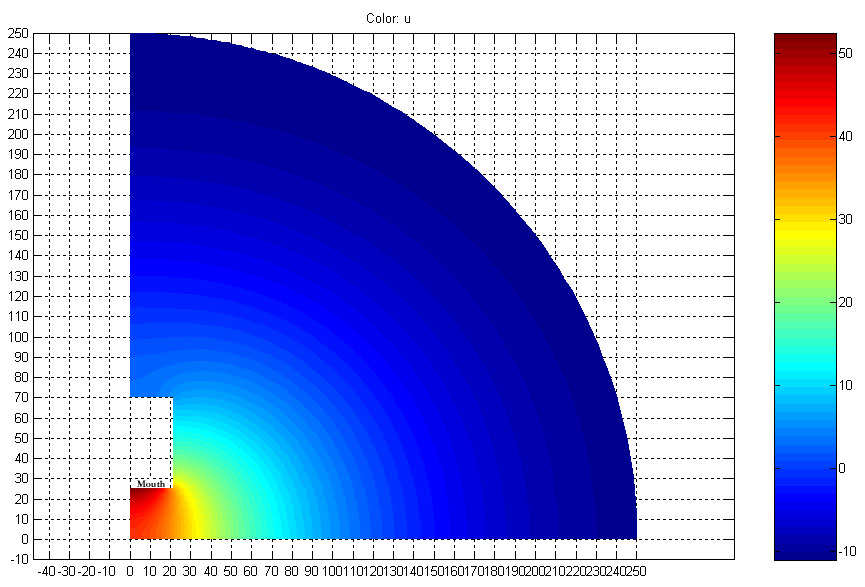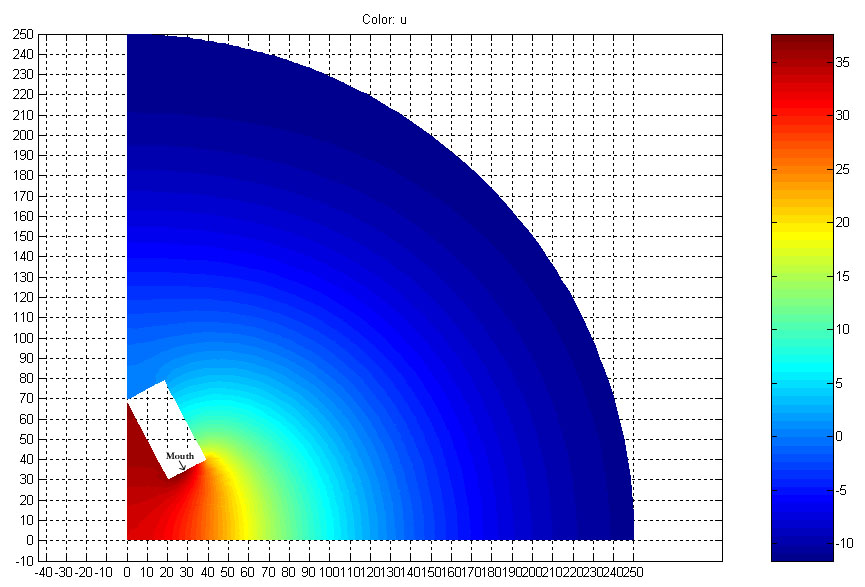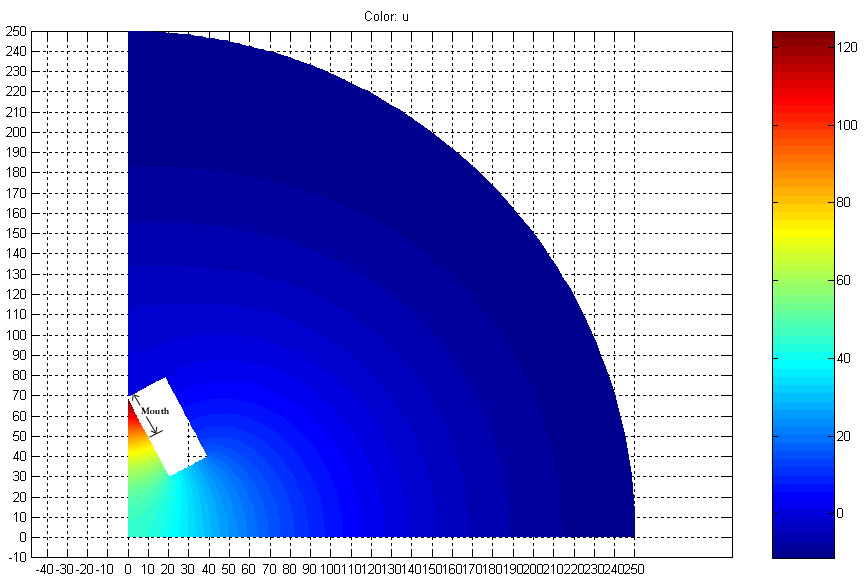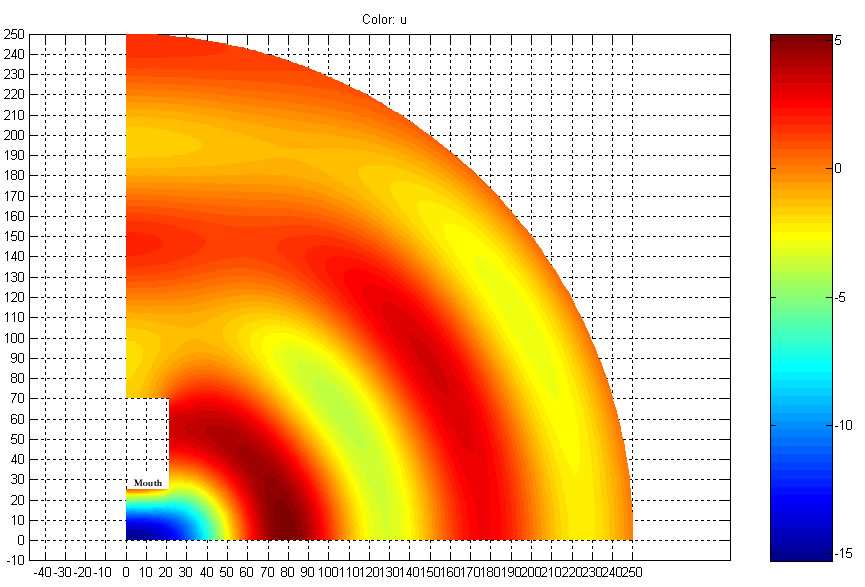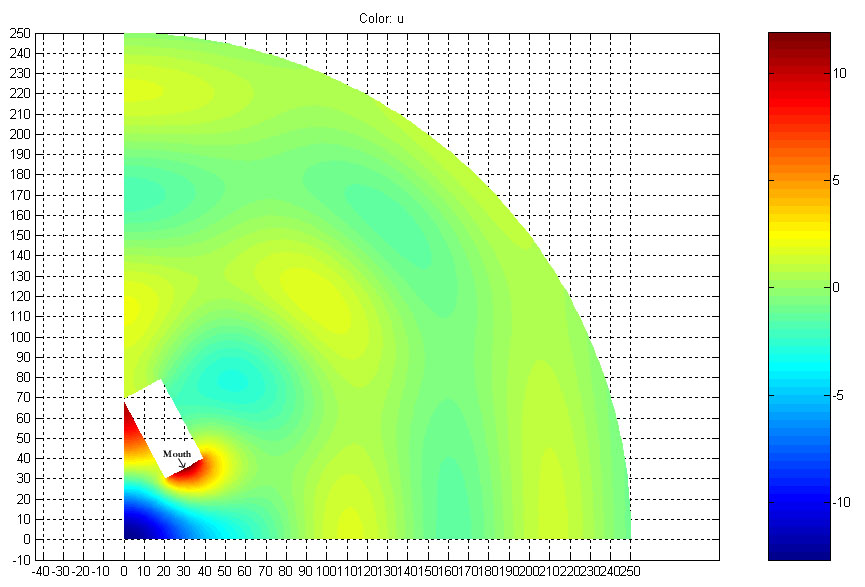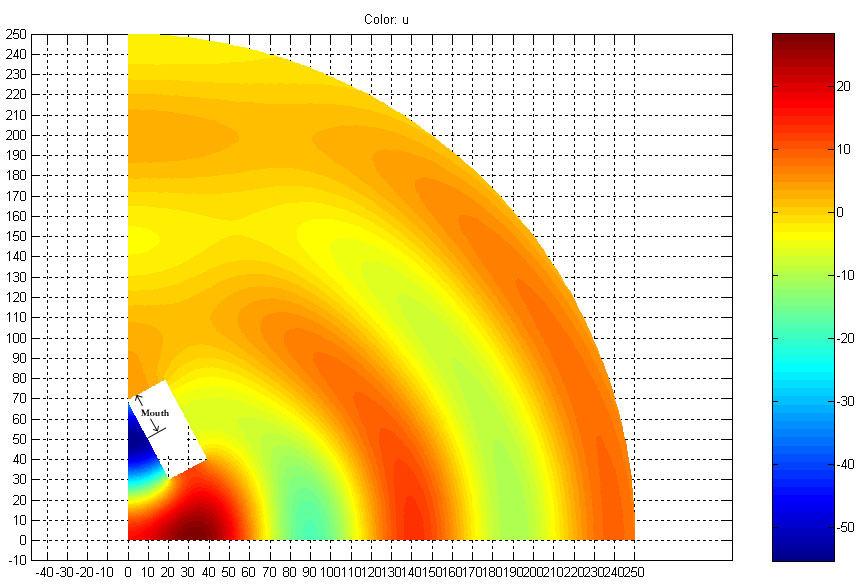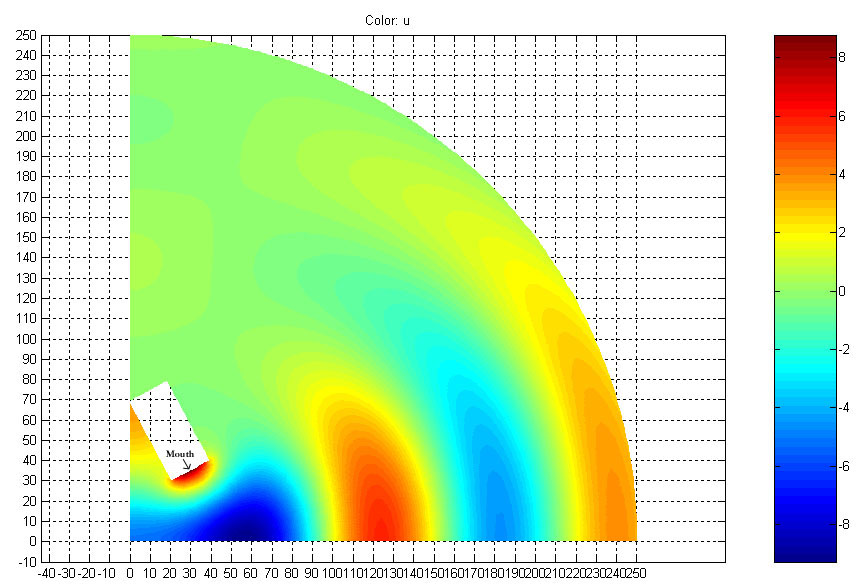Acoustic Finite Element Models of Bass horns in Various Orientations in Rooms
Results of FEA work involving bass horns and various methods of orienting them in a room corner are shown. The primary goal was to investigate alternative methods of using the room corner and a space between the horn and the wall to extend the acoustic length of the horn. In addition, it was desired to investigate a lower than expected high frequency cut off observed with a 'real world' 27hz horn when oriented in a corner a certain way. All modeling was done in Matlab using the PDE toolbox. The plots below show some of the results of this work.
The quantity plotted is velocity potential. The first derivative of velocity potential with respect to time is equal to pressure times a constant. Because the velocity potential takes the form of a sine wave in time, it is representative of the pressure distribution.
The models shown are a horizontal cross section of the room through the horn. In each plot, the horn is the white rectangular box near the corner. It is about the size of a LAB horn (24" x 48") which is also the size of the 27hz horn that was measured. In each plot, the location of the mouth on the horn is indicated. The units on both axes are in inches (c is about 13538 in/s). Note that the color scales differ for each plot - see the legend on the right side of each for reference. Additional notes are given after each plot.
